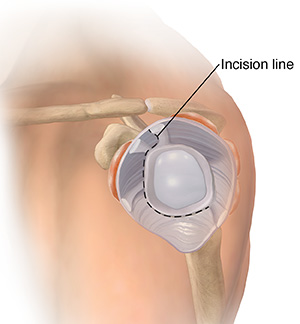Treating Frozen Shoulder: Medical Treatment
To treat a frozen shoulder, stretches are tried first. If stretches alone don’t help, your healthcare provider may suggest adding other treatments. Keep in mind that no treatment replaces shoulder stretches. After any of these treatments, you’ll need to start your exercises again as your healthcare provider advises.
Injection therapy
Your healthcare provider may suggest injection therapy. This does not cure frozen shoulder. But it may reduce pain so that you can do your stretches more comfortably. The injection typically includes two medicines. One is an anesthetic to numb the shoulder. The other is a steroid, such as cortisone, to help reduce painful swelling. It can take from a few hours to a couple of days before the injection starts to have an effect.
Surgical treatment
Surgery may be advised if stretching doesn’t relieve your pain and stiffness. In some cases, both procedures described below are done at the same time:
-
Manipulation. Your healthcare provider slowly raises your arm until the adhesions in the capsule are freed (released). The capsule is the sheet of tough fibers surrounding the bones that make up the shoulder joint.
-
Capsular release. Your provider frees the capsule adhesions through a cut (incision). This may be done if manipulation did not release the capsule. Surgery on the shoulder may be done through a few small incisions. This is called arthroscopic surgery. Or it may be done through one large incision. This is known as open surgery.

Arthroscopic capsular release may free the capsule and ligaments.
You may start doing shoulder stretches soon after manipulation and capsular release—perhaps even the same day. Your healthcare provider will discuss the plan for your treatment and stretches before the procedure.